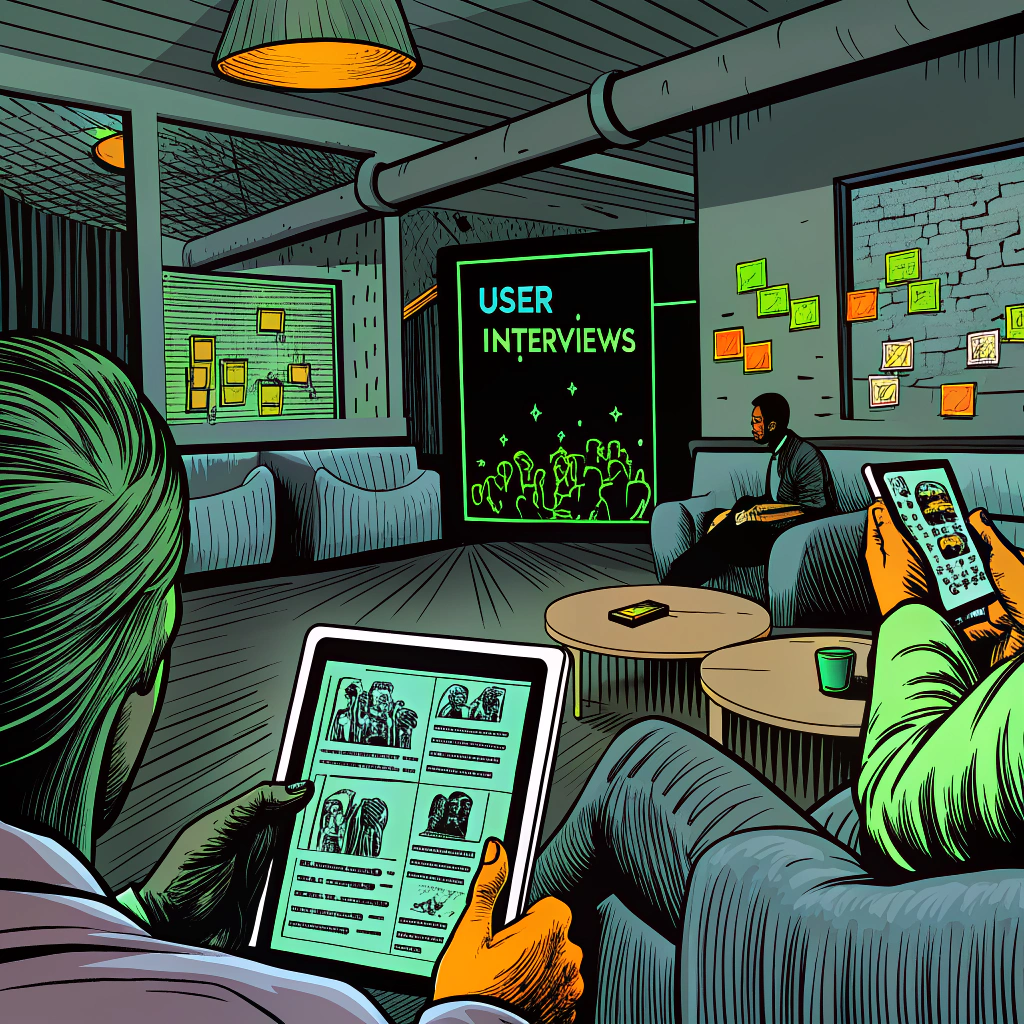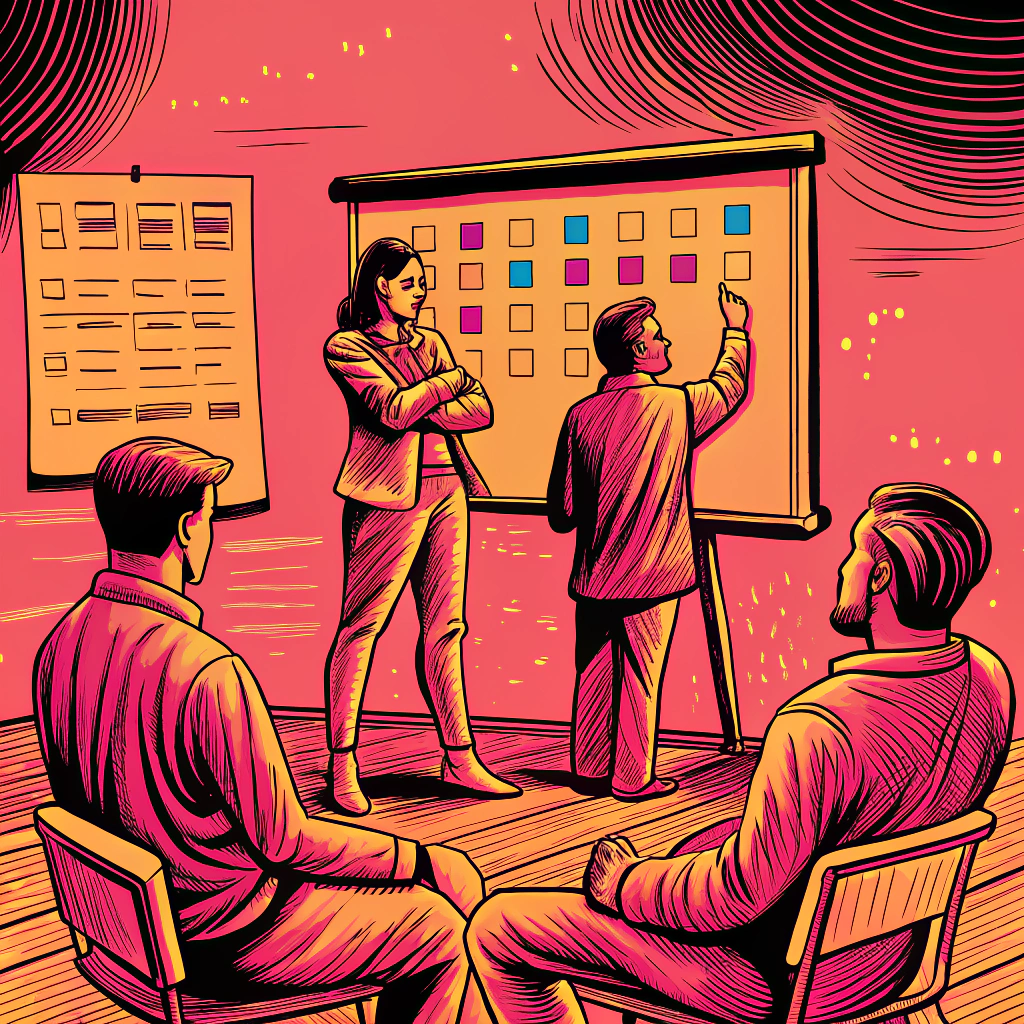Design Thinking
Design Thinking is a human-centered, iterative problem-solving approach that fosters creativity, collaboration, and user-driven innovation. Within the EdTech Mentoring Approach, Design Thinking serves as a structured framework for researchers and host organizations to develop meaningful solutions, whether for educational tools, services, or technology-driven innovations.

By emphasizing empathy, ideation, and rapid prototyping, this approach ensures that researchers actively engage with real-world challenges, refining their ideas through continuous feedback loops. The goal is not just to solve existing problems but also to identify new opportunities for impact within educational technology and learning environments.
the Different Steps and Goals
The Design Thinking process is a structured yet highly flexible approach that enables individuals and teams to solve complex challenges by prioritising user needs, creativity, and iterative development. Unlike linear problem-solving methods, Design Thinking is cyclical and encourages constant refinement based on real-world feedback.
For researchers participating in the EdTech Mentoring Approach, this methodology serves as a powerful tool to develop, test, and refine ideas in collaboration with host organisations. It ensures that their innovations in educational technology are both practical and impactful, aligning with the needs of learners, educators, and institutions.
Each step in the Design Thinking process serves a specific purpose, from understanding the challenges faced by users to refining a solution that has been tested, improved, and validated. The following is a detailed breakdown of each phase, outlining its goals, best practices, and expected results.
Podcast Insight: Design Thinking in Action
Delegates are invited to explore the dynamic world of Design Thinking in this 21-minute podcast session. This conversation offers practical insights on the application of design thinking in educational and research environments, with a focus on the EdTech mentoring approach. Discover how iterative development, user-centred problem solving and interdisciplinary collaboration work together to encourage innovation.
Whether you are new to the concept or wish to deepen your understanding, this session will provide valuable insights and practical relevance.

Step 1: Empathize – Understanding Users and Their Context
Understanding user needs is the foundation of Design Thinking. The empathize phase requires researchers to step into the shoes of their end-users, whether they are students, teachers, or administrators, to uncover real challenges and unmet needs.
At this stage, assumptions should be avoided. Instead, direct engagement with users through observations, interviews, and surveys helps build a comprehensive understanding of the learning environment and the factors influencing it.
Key Methods to Apply in this Step:
- User Interviews & Focus Groups – Conduct in-depth discussions with key stakeholders to understand their experiences and struggles.
- Observational Research – Watch how learners and educators interact with digital tools in their daily routines.
- Empathy Maps – Create visual diagrams of users’ emotions, thoughts, and challenges.
- Persona Development – Build fictional user profiles based on real data to represent different audience segments.
Outcome of this Phase:
- A deep understanding of the specific needs and challenges of end-users.
- A clearer direction for developing meaningful solutions.
- A well-defined user persona that guides decision-making in later phases.
Step 2: Define – Framing the Problem Clearly
Once insights from the Empathize phase are gathered, they must be synthesized into a clear and actionable problem statement. This ensures that researchers and host organizations have a shared understanding of the challenge they are addressing.
Instead of tackling broad, vague issues, researchers are encouraged to narrow the scope to a specific, solvable problem. This step also helps align project goals with the real needs of the education sector.A
Best Practices for Problem Definition:
- Affinity Mapping – Organize research findings into themes to identify key patterns.
- “How Might We” (HMW) Statements – Convert problems into opportunity-driven questions (e.g., “How might we make digital learning more accessible to rural students?”).
- Journey Mapping – Create visual representations of user experiences to highlight pain points and gaps in current solutions.
Expected Results of This Phase:
- A well-defined and specific problem statement that provides a clear focus.
- A strong alignment between researchers and host organizations regarding project objectives.
- A structured foundation for moving forward with solution development.


Step 3: Ideate – Generating Innovative Solutions
This is the stage where creativity takes center stage. After defining the problem, researchers and hosts work together to generate as many ideas as possible, without immediately evaluating feasibility.
The goal is to explore a broad range of potential solutions and push beyond conventional thinking. At this stage, all ideas are welcome—even unconventional ones—as they may spark unexpected innovations.
Techniques for Successful Ideation:
- Brainstorming & Mind Mapping – Rapid idea generation through group discussions.
- SCAMPER Method – Structured way to modify existing concepts by asking:
- Substitute – What alternative components can be used?
- Combine – Can different ideas be merged for a better solution?
- Adapt – How can existing tools or processes be repurposed?
- Modify – What changes would improve effectiveness?
- Put to Another Use – How else could this idea be applied?
Eliminate – What unnecessary elements can be removed? - Reverse – Can the process be flipped for better results?
- Crazy 8s – Rapid sketching of eight different ideas in eight minutes to encourage diverse thinking.
Outcomes from Ideation:
- A diverse set of potential solutions to explore further.
- Prioritized ideas based on feasibility and impact.
- The foundation for prototyping, ensuring practical experimentation.
Step 4: Prototype – Bringing Ideas to Life
The prototyping phase moves beyond ideas by creating tangible representations of solutions. These can be as simple as sketches or physical models or as complex as interactive digital simulations.
Rather than aiming for a fully functional product, prototypes should be quick, cost-effective, and easily adjustable. This step helps researchers and host organizations identify strengths and weaknesses before committing to large-scale development.
Effective Prototyping Strategies:
- Paper Prototyping – Simple hand-drawn wireframes that simulate digital interfaces.
- Storyboard Prototyping – Mapping user interactions step by step.
- Digital Mockups – Using Figma, Miro, or Adobe XD to create clickable wireframes.
- Role-Playing & Simulations – Acting out user interactions to test how a solution functions.
What This Step Achieves:
- A tangible concept that users can interact with.
- The ability to identify usability issues early on.
- A foundation for iterative improvements based on feedback.


Step 5: Test – Validating and Refining the Solution
Testing is a crucial phase where real users interact with the prototype. Their feedback provides critical insights into what works and what needs adjustment.
Rather than viewing testing as a final step, it should be considered an ongoing process that allows for multiple iterations and refinements.
Best Testing Approaches:
- User Testing – Observe how participants interact with the prototype.
- A/B Testing – Compare two different versions to determine the better-performing option.
- Think-Aloud Testing – Users verbalize their thoughts while using the prototype.
- Surveys & Feedback Forms – Structured questions to capture user opinions.
Final Outcomes of Testing:
- A validated, user-approved solution that meets real needs.
- Insights that guide further refinements and improvements.
- A well-documented process showing how the solution evolved.
Closing Thoughts: The Role of Design Thinking in a Broader Collaboration Spectrum
The Design Thinking approach provides a structured yet flexible methodology to foster innovation, creativity, and user-centred problem-solving, enabling researchers and host organisations to co-develop impactful solutions while continuously refining ideas through an iterative process. While Design Thinking is a powerful tool within the EdTech Mentoring Approach, it is just one of several possible pathways to effective collaboration.
The nature and intensity of collaboration depend on multiple factors, including the specific goals of the secondment, the expertise of the researcher, the needs of the host organisation, and external constraints such as time and available resources.In some cases, a structured and guided approach like Design Thinking is the best fit, whereas in others, a more entrepreneurial incubator model or an adaptive collaboration style may be more suitable.
Ultimately, flexibility is key. It is important to recognize that a single approach will not be suitable for every collaboration, and the ability to adapt, experiment, and adjust is crucial for success.The EdTech Mentoring Approach is designed to embrace this adaptability, ensuring that every collaboration is responsive to emerging opportunities and challenges, creating meaningful value for both researchers and host organizations.es in depth, researchers and host organisations can identify the best fit for their specific projects, ensuring productive and rewarding secondments.
